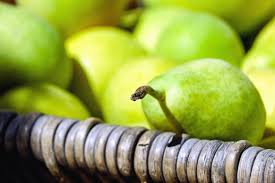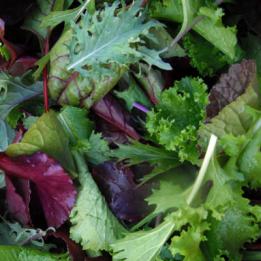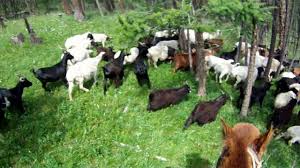You know those cute kids who are a bit awkward, very smiley and go straight into your heart?
So in the vegetable world it is the organic pumpkin that does this. 🙂 It is a bit awkward and plump, but it captures the heart because of its appearance and the stomach because of its taste.
The origin of the pumpkin is probably in Mexico, where it was initially grown for its seeds. The fruit itself was not eaten because it was once bitter and fibrous but it was used as a bowl or receptacle. It was gradually cultivated to become sweet (did you notice that the smell reminds you of watermelon sometimes?) and it became an important ingredient in their diet. The pumpkin traveled to North America by the original Americans who cultivated it, centuries before the European newcomers reached the shores of America.
The three main crops of the original Americans were called the "Three Sisters" and were grown together – pumpkin, corn and beans. Every spring the land was pre-prepared and holes were carefully dug for planting. In each hole they placed a fish, organic pumpkin seeds, organic corn seeds and organic bean seeds and covered the hole. In a miraculous process of symbiosis, the dead fish fertilized the earth for the crops that would grow.
The stalk of corn provided support for the climbing beans. The gourd covered the ground with its large leaves to protect the roots from weeds. And the beans returned nitrogen to the soil with another miraculous symbiotic process with bacteria (yes, the legume family knows how to do this).
In the fall, entire fields were filled with organic corn, beans and pumpkins, which grew together as the three sisters of Indian mythology, about which many stories are told, providing food, organic of course, that was balanced and nutritious (legume + grain = complete usable protein, the gourd provided vitamins and minerals.)
In the United States, the new immigrants adopted the pumpkin into their diet and also used it for Halloween – the night of all saints. Pumpkin pie was one way it was eaten, a recipe that is in common use today. In addition, you must have also seen lanterns made from a hollowed out pumpkin carved with a face in which you light a candle, which is called a Jack- o-lantern. This use of pumpkins is an American development of an Irish custom that was done with turnips, because of a story about the scary Jack…
Here in Israel, the gourd is the star on Rosh Hashana, when we bless it "to read our rights" ("Kara" is the Arabic word for pumpkin, and sounds similar to the word “read”) and in many homes, on Friday nights, the plump seeds are cracked and eaten during conversation.
The organic pumpkin, which is a family member of the Cucurbita family, loves sun and heat. It is sown or planted in the open field at the beginning of the summer or even in the spring, and when it is harvested for you, months after sowing, growing and sweetening in the sun, its peel is hard and preserves the sweetness of the fruit over a long period of time. Its seeds, which are hard and fertile can be replanted, (if we did not eat them on Erev Shabbat 🙂
You can say about organic pumpkin that it is beautiful, healthy and delicious – three virtues in one lady. 🙂
Beautiful — There are many species of organic pumpkin: the Neapolitan, the Tripolitan, Provence and Adi, and of course the butternut squash
Tripolitan:
Nepolitan:
Adi:
Healthy— The orange color of the flesh of the pumpkin is a composition of the pigment lutein, alpha carotene and beta carotene. In our body these turn into vitamin A that maintains the skin young by increasing the renewal of cells and collagen, and they are also antioxidants. These pigments also have an anti-inflammatory effect. Pumpkins contain vitamin C, B vitamins and folic acid, which together work to improve vitality, improve digestive function and the nervous system function. And of course dietary fiber and minerals like potassium, magnesium and calcium are also important. Pumpkin seeds increase vitality and fertility in men and also repel intestinal worms.
Delicious – Pumpkin can be eaten in almost any form and taste. Sweet or spicy, baked or fried, in soup, pies or stews. And as usual, I prepared for you some delicious organic pumpkin recipes that are really good and they are not fattening! 🙂
And do not worry, Cinderella has taken a particularly plump pumpkin for her carriage, but here in our store you can still find plenty of pumpkins 🙂
To health!
Have an orange and happy week
The garden team and Maggie
We can expect in our organic vegetable baskets: (Draft only)
Expect organic vegetable baskets: (draft only) Cucumbers
Tomatoes
lettuce
coriander
Cucumbers
pumpkin
zucchinis
Butternut Squash
Potatoes
Sweet potatoes
eggplant
In the large organic vegetable baskets also:
parsley
celery
Mizuna
Swiss Chard
In our organif fruit baskets:
Oranges
Pomegranate
Rimonim
And Karambula
In the large organic fruit baskets also:
melon
More oranges
And pears












